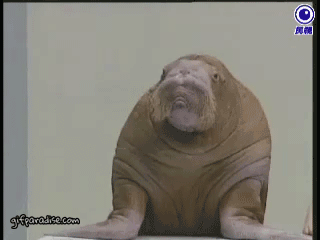spoilers throughout, so turn back now if you haven’t been transformed by Inside Out yet. Dead men tell no tales.
Let’s go back to Bing Bong’s introduction: he’s first spotted by Joy (Amy Poehler) and Sadness (Phyllis Smith) in long-term memory. This is the area of Riley’s mind that is supposed to be off-limits, populated only by blobby mind workers that perform maintenance and provide valuable upkeep and categorization. But this is where Bing Bong has found himself—he’s stealing Riley’s memories, hoarding his favorites in a “make believe” bag that also includes (in no particular order) a shoe, a kitchen sink, and a live cat. He’s dressed shabbily, like a hobo in an old Hollywood movie: torn, fingerless gloves and patches on the elbow of his jackets. Given his working knowledge of the Train of Thought, you can tell he’s been riding the rails. All he’s missing is a polka-dotted bindle. (We saw the first hour of Inside Out at a press event earlier this year and were convinced, for many weeks, that Bing Bong was going to turn out to be the film’s villain; the filmmakers admitted to us that this was purposeful and a way to keep the audience on their toes.)
This characterization was purposeful. Co-director Ronnie del Carmen said he was designed to resemble “vaudeville actors who used to play big theaters but after the invention of TV and movies, they’re out of work.” Del Carmen also told us that Bing Bong, no matter how fantastical he might appear, is based on real life. “Bing Bong was created from the observation of us watching our kids,” del Carmen explained. “When they were little they were talking while they were playing and creating little scenarios. They’re talking and you say, ‘I wonder who they’re talking to.’ And then they tell you these stories.” Director Pete Docter sums up Bing Bong even more succinctly: “He’s the spirit of childhood.”
And while the origins of Bing Bong are fascinating, it’s what he stands for that makes him really special. Bing Bong is struggling for relevancy; he wants Riley to remember him, so they can continue their adventures together and secretly wishes that they can travel, together, to the moon, in his song-powered rocket sled. He is pure, unchained imagination and his DNA can be traced back to the Heffalump from Winnie the Pooh, the elephants on parade from Dumbo and EPCOT Center’s Figment (which is explicitly referenced in a sequence featuring Bing Bong). His desire to stay in Riley’s life has left him desperate and scared. This is a common theme in Disney•Pixar movies, with the Toy Story movies (and television specials) paying particularly close attention to themes of abandonment, disuse, and emotional disengagement. In some ways, Bing Bong is a stand-in for Pixar itself.
“He’s an important character to us. We’ve sort of been chasing that in all of the movies—there’s something about this resistance to growing up and that’s sort of who we are,” Inside Out producer Jonas Rivera admitted to us. “So Bing Bong stands for a lot, to us. Which is why he had to go. He just felt like this breath of fresh air—like he was going to be fun and funny and childlike but also really poignant. He could really deliver.” It’s important to note two things here: one, that Rivera was sitting next to Docter, who was doodling in our Art of Inside Out book throughout the entire interview and who, as a 46-year-old filmmaker, has won an Academy Award and who lives in a multimillion dollar tree house in suburban California. And two: Bing Bong totally delivered.
Pixar, like Bing Bong, is designed for the enjoyment of children but aims for universality. They make movies that they want their young fans to grow up with. These are films that retain their vitality and importance. Pixar does not want to be forgotten or relegated to the dusty canals of long-term memory. This deeper meaning makes Bing Bong more profound, especially for those of us who grew up with Disney•Pixar films and still consider them important parts of our lives. In fact, it’s what makes him the best, most important character they’ve ever created.
Bing Bong ultimately gives himself up for Riley’s happiness. It’s one of the most touching, heartbreaking moments of Inside Out (a film that, for all of its humor, seems comprised largely of touching, heartbreaking moments). It seems an admission, by Pete Docter and the other filmmakers, that there will be a strain of children who will grow out of Disney•Pixar films. Some children will forget about talking toys and flying houses and talking fish. Although given the emotional weight and power of Inside Out, it’s hard to imagine anyone forgetting the film (or Bing Bong) for as long as they live.


